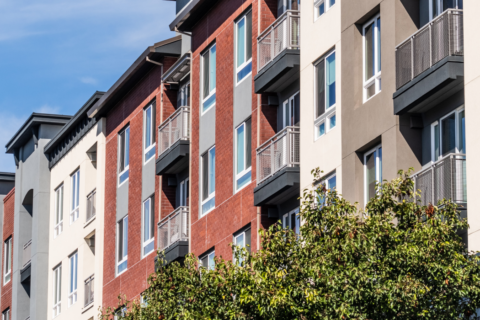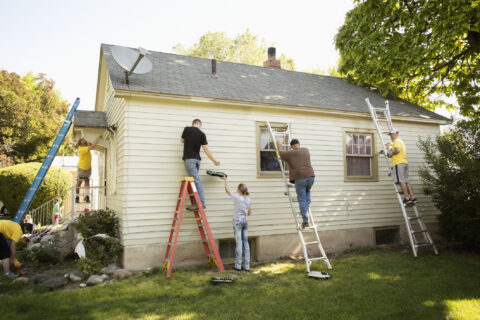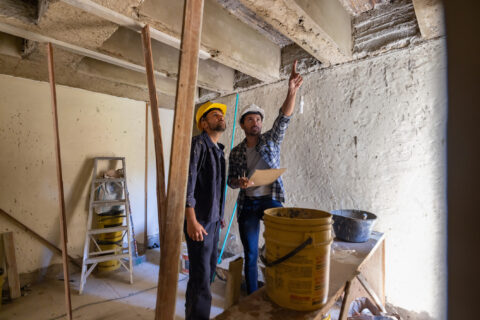The Healthy Housing Community of Practice (CoP) is one of NLC’s many technical assistance and coaching opportunities that help city leaders address housing-related health issues with expert guidance and peer support. The 2022-2023 CoP provided five participating cities with technical assistance, data access and a structured framework to develop roadmaps for health equity, with an emphasis on lead exposure and asthma prevalence.
Here is how one of the participating cities, Chicago, IL, continued the work it began in the CoP by leveraging data to make progress on its roadmap.
Piloting a Strategy for Asthma Reduction
During the CoP, Chicago’s multi-departmental team created an asthma-reduction roadmap that included a strategy focused on training staff and community partners in asthma prevention. However, the team later refined this strategy to be more targeted and proactive. As Emily Hoover, CSTE Applied Epidemiology Fellow for the Chicago Department of Public Health, noted, “We wanted to go beyond training and find a sustainable way forward to actually pinpoint areas of asthma burden prevalence and reduce home hazards.”
To do so, they launched a pilot initiative that built upon the city’s successful Lead and Healthy Homes program, with a revised strategy:
Promote protections against youth asthma by reducing home health hazards through the Healthy Homes program.
Chicago’s Healthy Homes program has a proven track record in lowering lead exposure, reducing elevated blood lead levels in children from 80% to under 5% over 30 years (PDF). Using this infrastructure, the city sought to similarly identify areas with the highest asthma burden via a data-driven pilot initiative. “We know that there is a correlation between the age of housing stock and dangerous lead levels,” says Hoover, “and we wanted to explore a similar correlation between housing stock and asthma burden to see if these issues were occurring in the same areas of the city.”
The team analyzed key data from three sources:
- Pediatric asthma prevalence: hospital discharge data from the Illinois Department of Public Health (available at the zip-code level).
- Adult asthma prevalence: census-tract data from MySidewalk, a platform introduced through the CoP that includes population and income indicators as well as rented vs owner-occupied units.
- Community-level health data: long-standing public health indicators based on Chicago’s 77 community areas.
Access to and interpretation of these three data sources provided the city the perspective it needed. Says Hoover, “Though the data represent slightly different geographies, this overlay enabled us to see where the asthma burden is greatest. And sure enough, we saw high pediatric asthma burden in the same areas of high blood lead levels.”
Data Points the Way Forward
Pinpointing high-prevalence areas has enabled Chicago to refine actions moving forward on its roadmap, integrating asthma awareness into its existing Lead and Healthy Homes framework. Key actions include:
- Training home inspectors and nurses (in collaboration with the Chicago Asthma Consortium) to recognize asthma burden indicators in target areas.
- Enhancing data collection by tracking asthma-related housing risks reported by inspectors and nurses.
- Exploring appropriate evaluation measures to gauge the impact of this pilot over time.
Chicago is also in communication with other cities tackling asthma-related housing issues, including Wisconsin Asthma-Safe Homes Program, Lowell Healthy Homes Program (Lowell, MA) and Breathe-Easy at Home (Boston, MA).
By sharing findings and best practices, Chicago aims both to strengthen its efforts and contribute to a broader national database of outcomes related to asthma hazard reduction in housing.
Healthy Housing Local Action Challenge
Chicago is one of over 60 cities, towns and villages that participate in the Healthy Housing Local Action Challenge (HHLAC). Municipalities that participate in the Local Action Challenge have access to Sidekick, an on-demand tool for answering community data questions. Whether exploring trends, identifying local needs or preparing for a meeting, Sidekick and mySidewalk’s ready-to-use data library can help cities get to insights faster.
Cities, towns and villages are using mySidewalk to find data recommendations on topics like:
- Housing quality and conditions
- Zoning, land use, boundaries, city limits, population density, roadways and planning
- Where is lead paint in my community?
- Explanations for how indices are calculated, such as the social vulnerability index and the difference between indices.
- So much more!
Take the Challenge on the Healthy Housing Local Action Challenge Initiative page and learn more about how your city can access data analysis tools like mySidewalk!
Take the Challenge
Everyone deserves to live in a safe and healthy home but, unfortunately, health hazards are still common in homes across America. When you take the Healthy Housing Local Action Challenge, you’ll receive support and tools to better mitigate housing health hazards for your residents. Plus, you’ll receive national recognition for your work.








